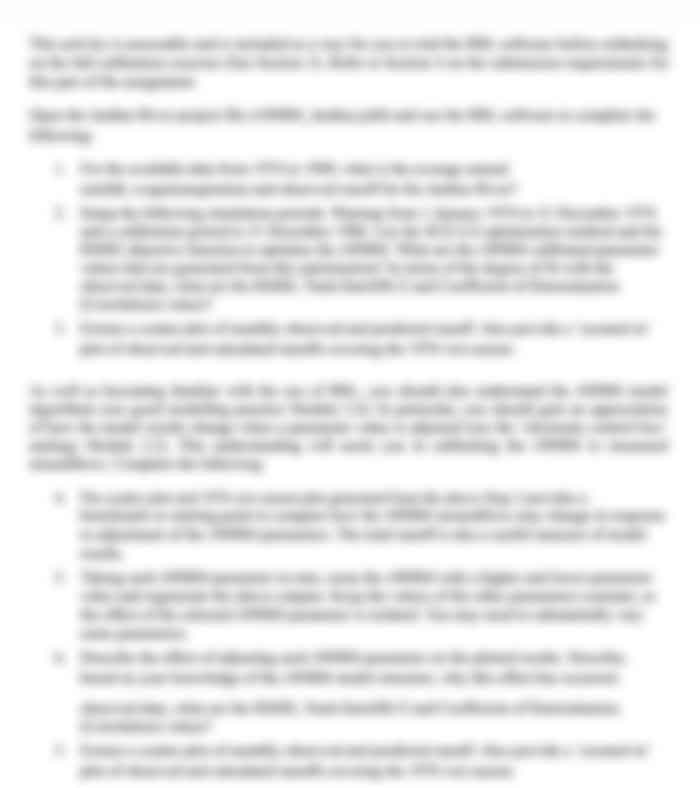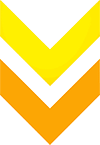NEBOSH KNOW - WORKPLACE HEALTH AND SAFETY PRINCIPLES ASSESSMENT
PAPER2OF2
Guidancetolearners
There are two question papers for this assessment.This paper (Paper 2 of 2) contains the followingassessmentparts:
- Part2:tasksthatyouwillneedtocompleteinasuitableworkplace(150availablemarks).
- Part3:reflectivetasks (100availablemarks).
- Part4:ashortresearchproject(150availablemarks).
Allthetasksandactivitiesinallpartsoftheassessmentaremandatory.
You will have 6 weeks (30 working days) to complete both papers/all four parts of the assessment.Pleasereferto yourregistrationconfirmationemailforthe upload deadline.
PleasenotethatNEBOSHwillbeunabletoacceptyourassessmentoncethedeadlinehaspassed.Youmust usetheanswertemplatefor Paper 2.
Thisassessmentisnotinvigilated,andyouarefreetouseanylearningresourcestowhichyouhaveaccess,egyourcoursenotes,or theHSEwebsite,etc.
By submitting this completed assessment for marking, you are declaring it is entirely your own work.Knowinglyclaimingworktobeyourownwhenitissomeoneelsesworkismalpractice,whichcarriessevere penalties.This means that you must not collaborate with or copy work from others.Neithershouldyoucut andpaste blocksof textfromtheInternet orothersources.
Part2:Workplace-basedactivities
Thefollowingactivitiesmustbecarriedoutonyourchosenworkplace.Typicallythisistheworkplacein which you normally work.However, if your workplace is not suitable (for example it does notprovide sufficient scope), you can choose any suitable workplace, provided you can access theinformationyouneed tocomplete the activities inthis part.
Activity1:Description ofyour chosenorganisation
This section is very important.It describes the context of your organisation.The answersyou give to the remaining activities in Part 2 must be consistent with the information youprovide here.This information paints a picture that helps the Examiner award you marks forrelevance and suitability in those later activities.For example, if you work in the service sector, suchas banking or insurance, it would be unusual to later describe a situation where welding contractorsare repairing a chemical storage tank in your own organisation; but that would not be unusual in achemicalfactory.
|
1 |
Provideadetaileddescriptionofyourchosenorganisation.Representativeexamplesshouldbeincluded where relevant. |
|
|
Asaminimum,yourdescriptionmustincludethefollowing |
||
|
- Industrialsector,e.g.,agriculture,serviceindustry,manufacturing,etc |
||
|
- Physicalfeaturesofthesite(ifyourchosenorganisationhasmultiplesites,describeonlythesitethatyouarebasingyourassessmenton) |
||
|
- location |
||
|
- approximatesitearea |
||
|
- numberandtypes(e.g.,offices,warehouse,etc)ofbuildings |
||
|
- Mainactivitiescarriedoutatthesite |
||
|
- Workerprofileandworkorganisationatthesite |
||
|
- themainrolesandresponsibilitieswithintheorganisationwithexamples |
||
|
- number of workers by employment status with examples, e.g.,contract,full-time, etc |
||
|
- numberandtypesofvulnerablegroups |
||
|
- thetypicalwork shiftpattern(s). |
(10) |
|
|
Note: You are free to include any other information that you think is relevant,but no additional marks are available.You are therefore advised to include asmuchrelevant detailasyou can undertheabovecategories. |
||
|
Ifthelocationoractivityofyour organisation issensitive(forwhateverreason)you are permitted to create fictitious (but nonetheless representative) details.For example, the location may be changed if this would otherwise revealsensitivedetail. |
||
|
2 |
(a) Reviewhowyourchosenorganisation(outlinedinActivity1)selectscontractorsand manages themwhilethey areonsite. |
|
|
YouranswermustconsiderthemaintopicsfromINDG368,specifically |
||
|
identificationofjob |
||
|
criteriafor selectionofcontractors |
||
|
assessingtherisksfromthework |
||
|
provisionofinformation,instructionandtraining |
||
|
co-operationandco-ordination |
||
|
consultationwithworkforce |
||
|
managementandsupervisionofcontractorswhileonsite |
||
|
relevantlegalrequirements. |
(20) |
|
|
Note:Youmustusesuitableexamplesfromyourchosenorganisationtoillustrateyouranswer. |
||
|
(b) Make TWO recommendations for improving contractor selection ormanagement in your chosen organisation, AND justify EACH of therecommendations. |
(20) |
|
|
Notes: The recommendations can be from the same topic, but theymust require separate actions and have different outcomes.Forexample,youmaymaketworecommendationsthatrelatetocontractorselectioncriteria. |
||
|
You must use the Activity 2(b) format table provided in the answer sheettorecord youranswers. |
||
|
Thereare10marksavailableforeachrecommendation. |
|
3 |
The Health and Safety Executives (HSEs) safety culture maturity model(SCMM)isdescribedinOffshoreTechnologyReport2000/049.TheSCMMisa tool that puts the focus on improving behaviour and culture.As a result, itshouldonlybeadoptedbyorganisationsthatatleasthavethesafetybasicsinplace.TheSCMMis comprised of5Levels. |
|
|
(a) Regardless of whether your organisation meets the minimum specificcriteriaforadoptionofthemodel,evaluate,withreasoning,whichlevelofthe SCMMbest fitsyour chosenorganisation. |
(20) |
|
|
Note:Youshoulduserelevant examplesfromyourorganisationtosupportyourevaluation. |
||
|
(b) Based on the outcome of your analysis in 3(a), you must identify THREErealisticactionsforimprovingorsustainingsafetyculturematurityinyourchosenorganisation. |
||
|
Youmust |
||
|
- statetheaction |
||
|
- explainwhattheactionisintendedtodo |
||
|
- explainhowtheaction'seffectivenesswillbemeasured. |
(15) |
|
|
Notes:IfyourevaluationdeterminesaLevel5resultassociatedwiththemodel, actions are still generally needed to stop complacency.If youfeel that your organisation is currently at Level 5 of the model, you mustidentify areas where performance can be improved to stop complacencyandenablecontinual improvementto take place. |
||
|
YoumustusetheActivity 3(b)formattableprovidedintheanswersheettorecord youranswers. |
||
|
Thereare5marksavailableforeachaction. |
|
4 |
TheHSEsguidancedocumentHealthandsafetytraining:abriefguide (INDG345)setsoutafive-stepapproachtohealthandsafetytraining. |
|
|
(a) Comment on the strengths and weaknesses in your chosenorganisations approach to health and safety training for Step 5: Checkthetraininghas worked. |
(20) |
|
|
Notes:Youmustsupportyouranswerswithrelevantexamplesfromyourchosenorganisation. |
||
|
(b) Based on your evaluation from 4(a), identify THREE realisticimprovements for Step 5of thetraining process. |
||
|
ForEACHimprovement,give |
||
|
- adescriptionoftheimprovement |
||
|
- anexplanationofwhattheimprovementisintendedtodo |
||
|
- anexplanationofhowtheeffectivenessoftheimprovementwillbemeasured. |
(15) |
|
|
Notes: Usually, improvements would come from identified weaknesses.But, if your evaluation did not identify any areas of weakness, you muststill identify realistic improvements that would help your organisationperformeven better. |
||
|
You must use the Activity 4(b) format table provided in the answer sheettorecord youranswers. |
||
|
Thereare5marksavailableforeach improvement. |
Activity5:Monitoringand measuring-Audits
|
5 |
Compareyourchosenorganisationagainst TENoftherequirementsofthe auditstandardgiveninsupportingdocument1. |
(30) |
Task1: Ethics
|
1 |
Professionalcodesofconductareusuallybasedonethicalprinciples. |
|
|
(a) Evaluate your own professional practice against the following ethicalprinciples |
||
|
- integrity. |
(15) |
|
|
- personalconflictsofinterest. |
(15) |
|
|
Notes:Youmustgiverelevantexamplestosupportyouranswers. |
||
|
Your professional practice does not have to be health and safety-related;it can relateto apreviousjobor experience. |
||
|
(b) Fromyourevaluationsinpart(a) |
||
|
- suggest THREE actions that you consider will improve aspects ofyourethicalprofessionalpractice |
||
|
- explainwhatdifferencetheaction(s)willmaketoyourprofessionalpractice |
||
|
- explainhowyouwillreviewtheeffectivenessoftheseactions. |
(30) |
|
|
Notes:YoumustusetheTask1(b)formattableprovidedintheanswersheetto recordyour answer. |
||
|
Thereare10marksavailableforeachaction. |
Task2: Transferableleadership skills
The aim of this part of the assessment is for you to reflect on transferable leadership andprofessional skills that you may already have and/or need to develop.These skills could have beenacquired either through your work life (whether this is in health and safety or some other workactivities)oryourpersonallife.
For instance, you may want to draw examples where you have been chairing a meeting or beenrequired to make decisions under pressure.Alternatively, you may carry out voluntary work and wantto draw on this for your examples.The examples can be from any element of your working orpersonallife.
|
2 |
(a) Compareyourownleadershipexperienceagainstthecharacteristicsofa resonant leader.You must identify EIGHT resonant leadercharacteristicsandshowhowtheseare,orarenot,reflectedinyourownleadershipstyle. |
|
|
Youmustuserelevantpersonalexamplestosupportyouranswer. |
(20) |
|
|
Note:YoumustusetheTask2(a)formattableprovidedintheanswersheetto recordyour answers. |
||
|
(b) Select what you consider to be the TWO most important resonant leadercharacteristics, and comment on how you will develop these, whatdifference they will make to your leadership style, and how you willreviewthe effectivenessofthe changes. |
(20) |
|
|
Notes:YoumustusetheTask2(b)formattableprovidedintheanswersheetto recordyour answers. |
||
|
Thereare10marksavailableforeachcharacteristic. |
Task: Shortresearchreportonbenchmarking
|
Taskbrief |
|
|
Prepare a brief report on what you believe are the THREE most significant criticalsuccess factors (CSFs) for effective benchmarking of health and safety managementperformance. |
|
|
Makeyourreportnomorethan3500words;approximately500wordsofthe3500mustbe used forthe executive summary. |
|
|
Your report should NOT be based on your chosen organisation but on the body ofevidenceyouresearch. |
|
|
Thereportmust |
|
|
- includeajustificationforyourselectionofEACHCSF |
|
|
- citereliableevidencefromarangeofsourcessuchasauthoritativeguidance,expertopinions,andotherevidencetosupportyourjustification |
|
|
- includereferencesfortheevidencesourcesthatyouhaveconsulted. |
|
|
Yourresearchreportshouldbepresentedunderthefollowingformat |
|
|
- Executivesummary |
|
|
- Introduction |
|
|
- JustificationforselectionofthreeCSFs(includingevidenceofresearchandreferencing) |
|
|
- Conclusion |
|
|
- Otherreferences,ifapplicable(referencesusedinadditiontothoseusedforeachidentified CSF) |
(150) |

